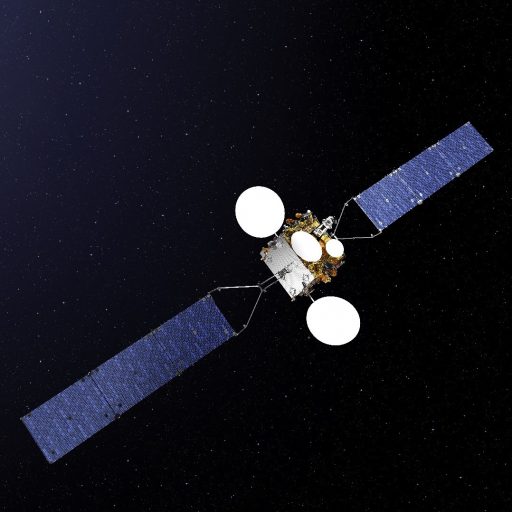Koreasat-7

Koreasat-7 is a commercial communications satellite built by Thales Alenia Space for operator KT Sat, a subsidiary of KT Corporation, to deliver a broad range of services to South Korea including Internet access, multimedia distribution, broadcasting and fixed communication services.
KT Corp. is the largest telecommunications and media services provider in South Korea and also is the country’s sole satellite service provider. KT Sat currently has three satellites in operation to deliver the full range of services to the Korean territory. Koreasat-7 is the third in the Koreasat series to be launched by Arianespace following in the footsteps of Koreasat-3 launched in 1999 and Koreasat-6 in 2010.
Koreasat-7 hosts 30 Ku-Band transponders and three Ka-Band transponders to provide a full range of video and data applications, including Internet access, direct-to-home television broadcasting, government communications and VSAT (Very Small Aperture Terminal) networking services. Positioned at 116 degrees East in Geostationary Orbit, Koreasat-7 is designed to increase KT Sat’s throughput capacity and extend coverage over Korea, the Philippines, the Indochinese Peninsula, India and Indonesia.
Koreasat-7 hosts steerable Ka-band antennas, giving the spacecraft a high-degree of flexibility to relocate capacity within its footprint based on changing market demands.

The satellite’s payload comprises twenty-four 54MHz Ku-Band transponders, six 27MHz Ku-Band transponders for broadcasting satellite services and three 255MHz Ka-Band transponders for steerable, high-throughput beams.
The Ku-Band payload generates a total of four beams, an Indian coverage zone over the entire Indian subcontinent and some surrounding areas to the north east, an Indochina Ku-Band zone stretches from Myanmar to Malaysia, a South-East-Asia beam primarily covers Indonesia and neighboring territories and the Philippines Ku-Zone covers a large portion of the Philippine Sea and the majority of its islands, extending as far north as Taiwan.
KoreaSat-7 has a launch mass of 3,680 Kilograms, measuring 2.3 by 1.75 by 3.39 meters in dimensions, based on Thales Alenia’s Spacebus-4000B2 satellite platform. The satellite will operate from 116 degrees East in Geostationary Orbit and has a planned service life of over 15 years.
Spacebus-4000B2 is part of the Spacebus-3000/4000 series developed by Aerospatiale (now Thales Alenia) in the 1990s to cover a range of satellite masses and payload accommodations ranging from medium-sized satellites with a mass of 3,000kg to high-powered systems up to 5,900 Kilograms. The bus can support up to 12kW of payload power and uses a new avionics system with a 100-Volt power bus.

Spacebus dates back to 1985 when the first Aérospatiale-built Spacebus satellite, flying under the Spacebus 100 designation was launched. Over the years, the capabilities of the satellites were expanded owed to more and more powerful launch vehicles becoming available, allowing transponders and equipment to be added to the satellites. Going through constant stages of modernization, Spacebus evolved into its 3000 and later the 4000 series which feature the same basic structure but different avionics systems.
Thales provides an ITAR-free version of its satellite buses to allow spacecraft to launch on non-U.S. launch vehicles like the Chinese Long March rocket.
Spacebus 4000 uses a modular approach, with separate construction of the satellite platform and payloads for integration late in the manufacturing process. The satellite platform consists of carbon fiber with a composite honeycomb structure making up a central thrust structure facilitating the propellant tanks and a series of internal and external panels facilitating the various systems such as payloads, avionics modules and radiators.
The 4000 series features upgraded avionics, transitioning from a 50-Volt power bus to a system running at 100 Volts. Also, a new integrated onboard computer with a higher flexibility than previous versions was added and the satellite bus employs star trackers specifically designed for use in Geostationary Orbit to provide excellent pointing data for attitude control.
A chemical propulsion system is used for apogee-raising and stationkeeping in Geostationary Orbit for a minimum service life of 16 years. The satellite uses an S400 main propulsion system and sixteen S10-18 bi-propellant attitude control thrusters, each delivering 10N of thrust. The S400 series built by Aitbus Safran Launchers are bi-propellant engines using Monomethylhydrazine and Mixed Oxides of Nitrogen as propellants. Depending on the version used, S400 provides 420 to 425 Newtons of Thrust with a specific impulse of 318-321 seconds.
